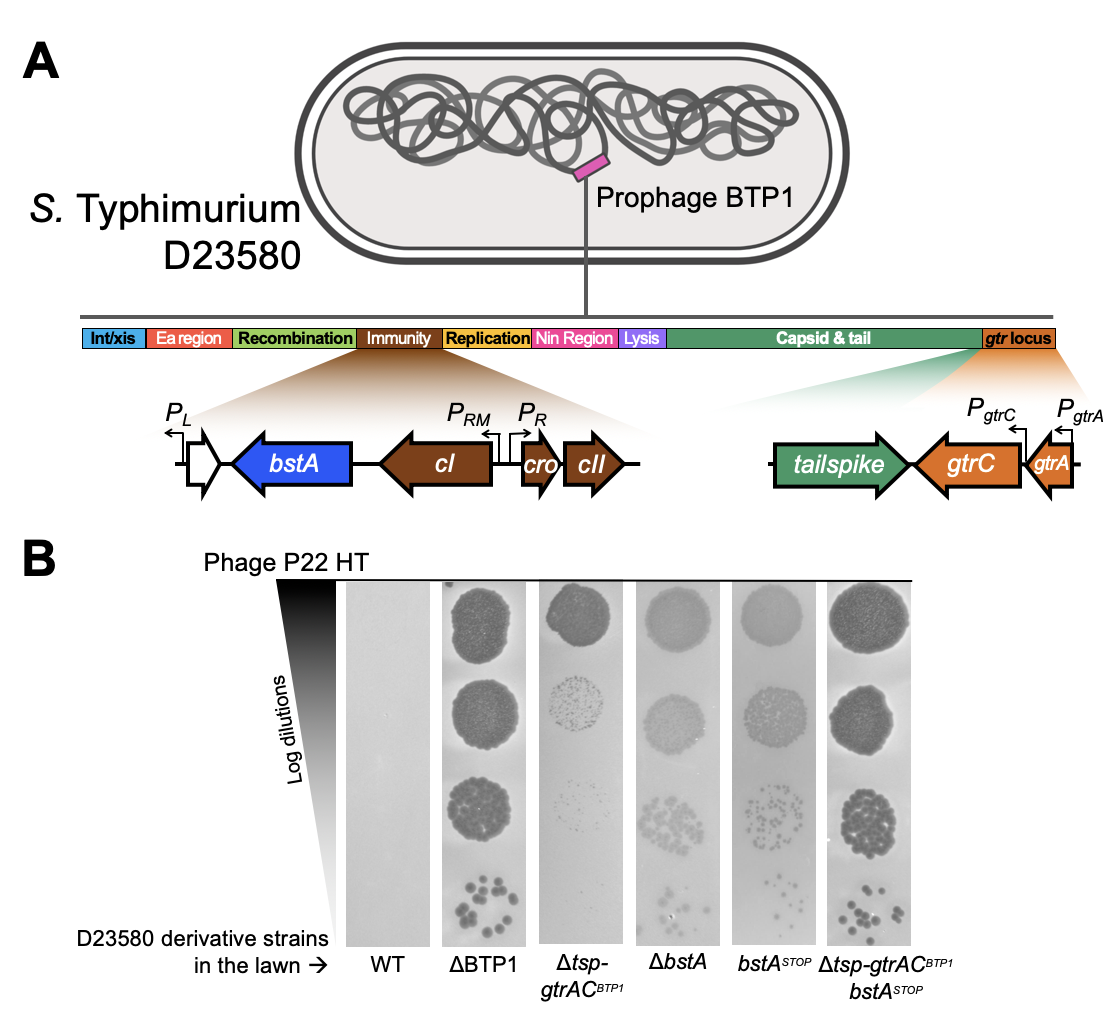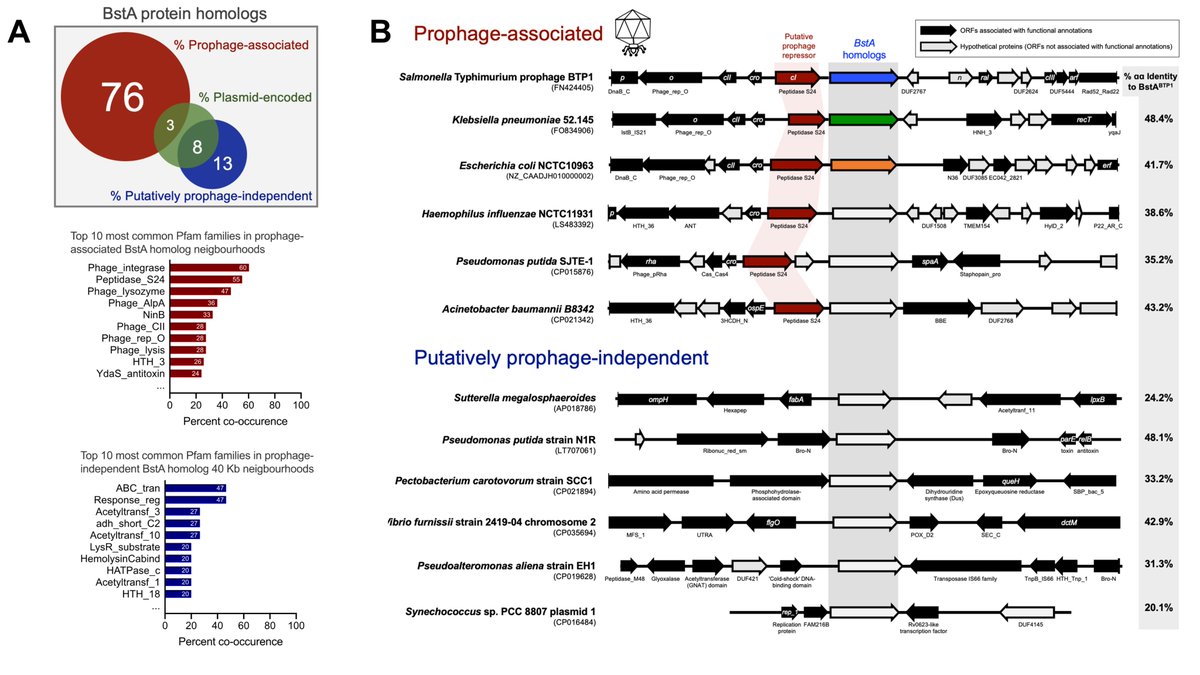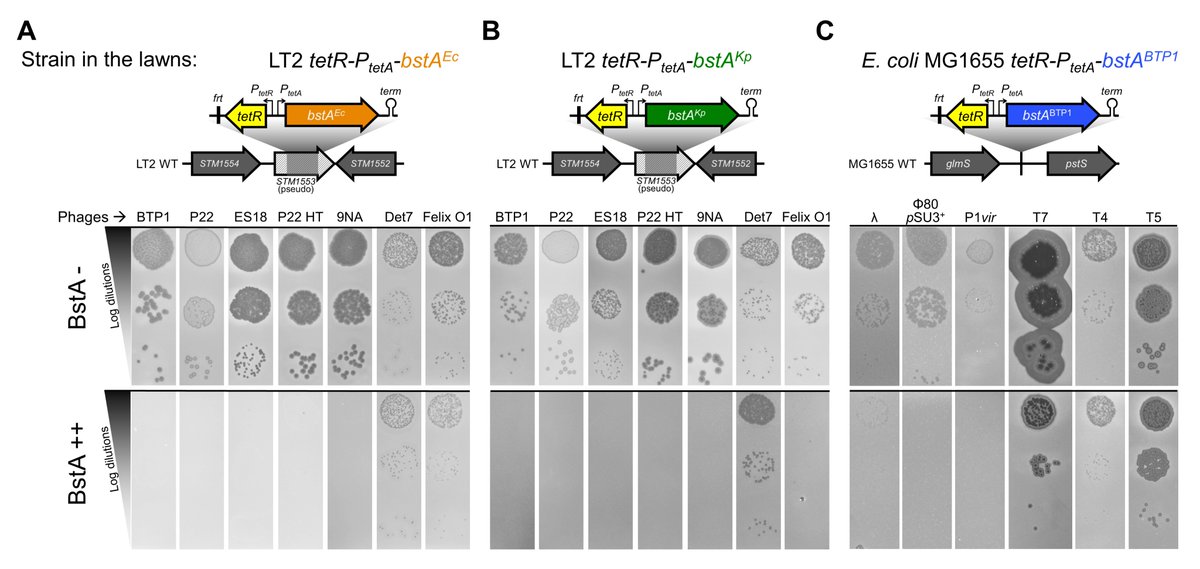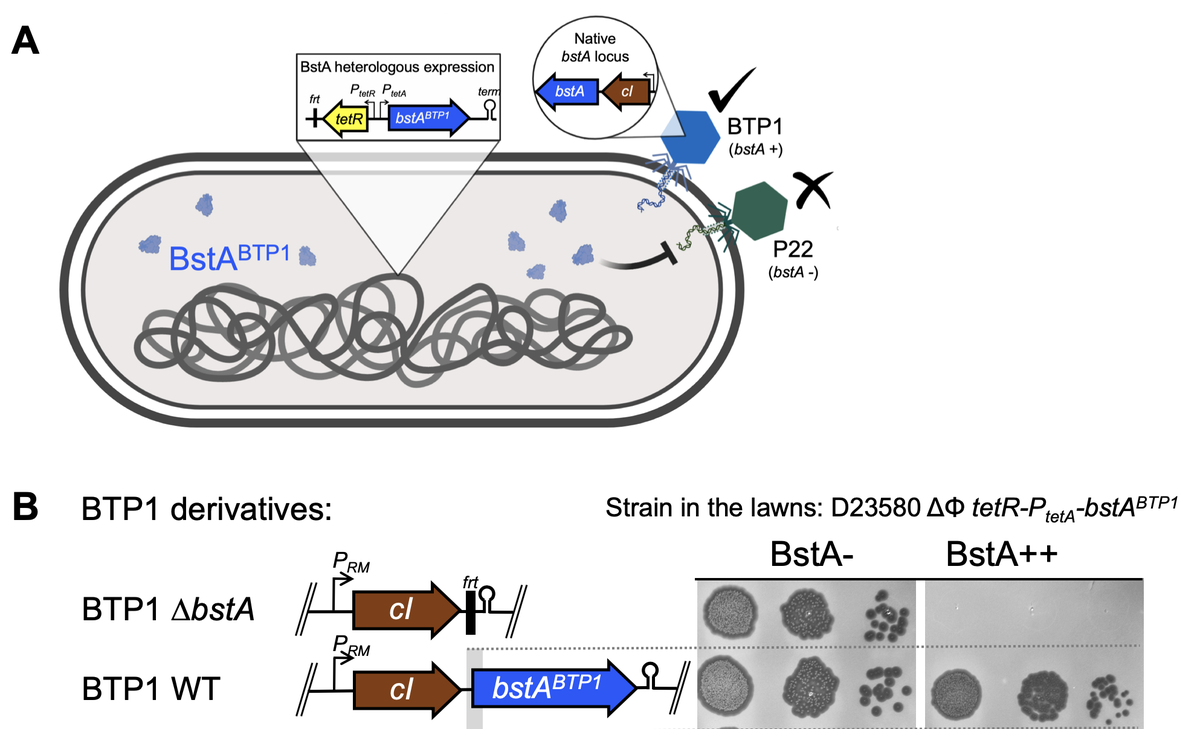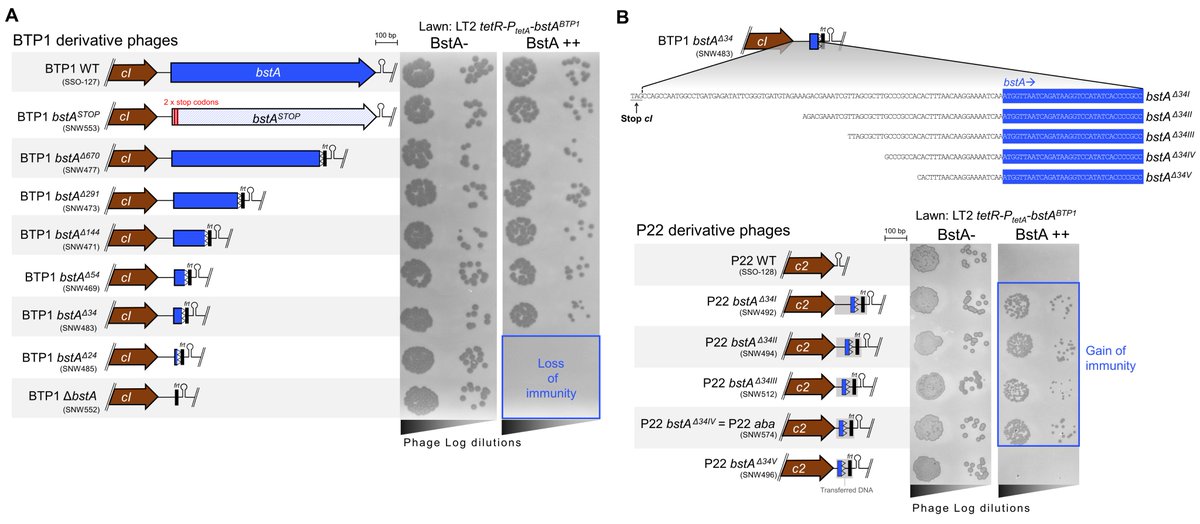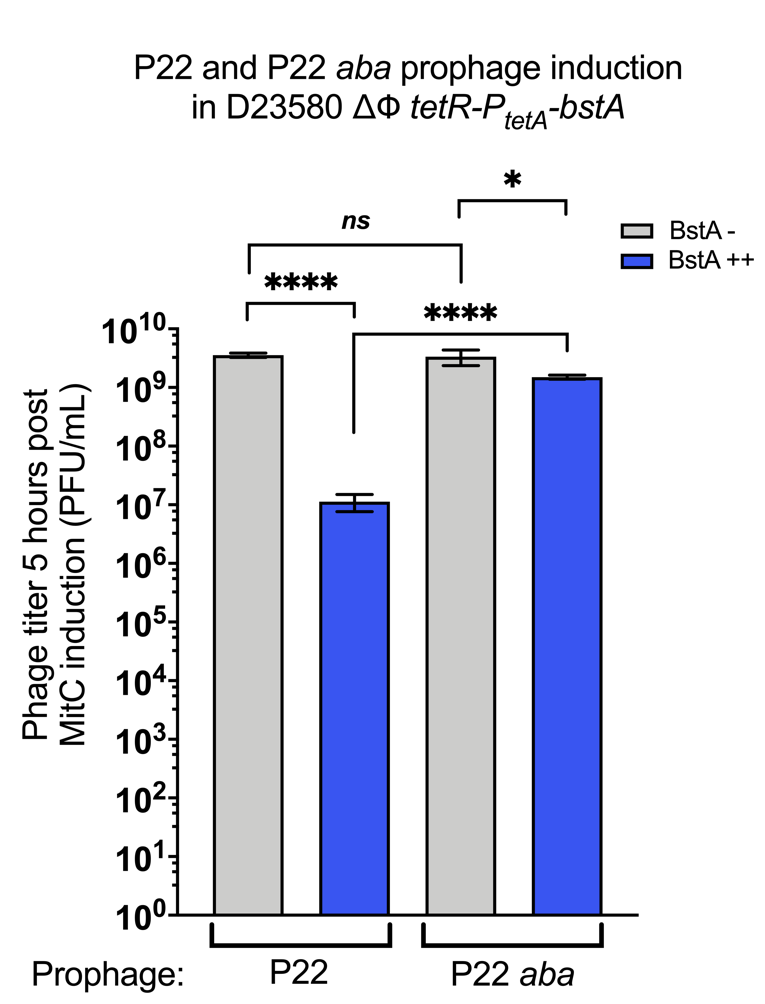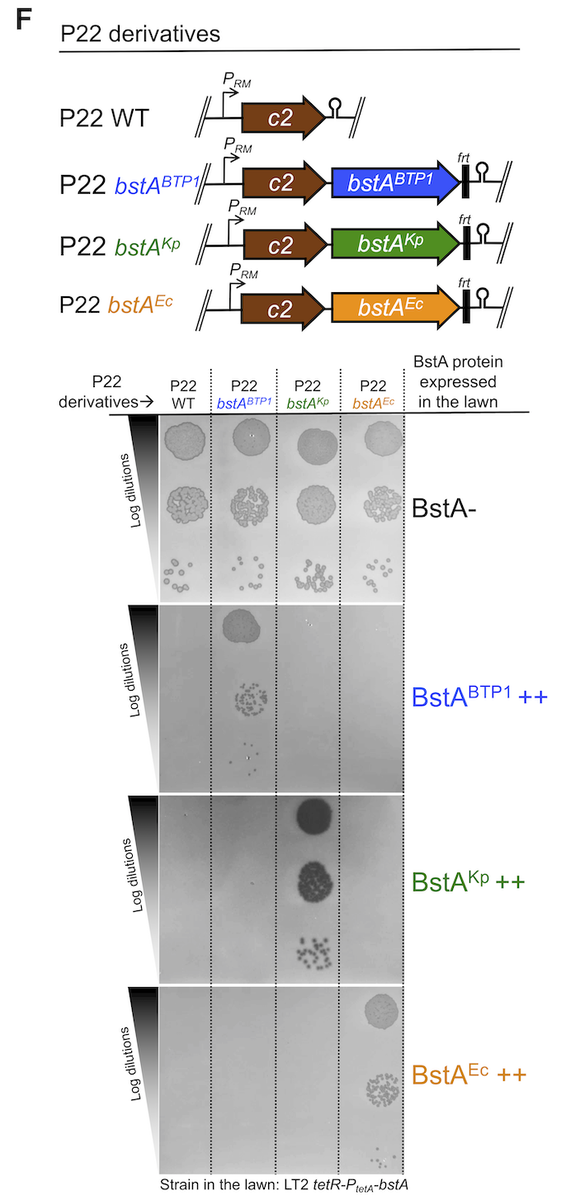I& #39;m very excited to finally share the preprint for a project I& #39;ve been working on for >4 years! Here& #39;s a thread with some of the highlights: https://twitter.com/biorxiv_micrbio/status/1282926532848214021">https://twitter.com/biorxiv_m...
In a previous study we identified genes that were highly-expressed in Salmonella prophages, and were probably modulating cell biology (more on that here https://twitter.com/implosian/status/1225264880451772417?s=20).">https://twitter.com/implosian... One of the genes was the mysterious bstA
I found that knocking out the bstA-encoding prophage, or knocking out the bstA gene, made Salmonella susceptible to phage infection, suggesting that BstA was a new phage defence protein.
We found homologs of BstA in lots of pretty diverse bacteria, usually associated with prophages.
But protein function-wise, we couldn& #39;t find out much about it except that it might contain a DNA-binding domain
But protein function-wise, we couldn& #39;t find out much about it except that it might contain a DNA-binding domain
We took two of these homologs, one from E. coli and one from Klebsiella (which both only share around 40% identity to BstA from our Salmonella prophage at the amino acid level) and showed that they also mediated phage defence! But how??
I was v. fortunate to meet @chaaawie at an @harvardmsi microscopy course, and we hatched a plan to look at how BstA worked under the microscopy. Here& #39;s what happened to cells with and without BstA when we infected them with phage. SPOILER: EVERYTHING DIES
Which was confusing! because BstA was supposed to protect against phage infection!
Until we realised that the protection BstA confers might be at the population-level: so-called "abortive infection". The infected cell dies, analogous to pathogen-stimulated apoptosis in Eukarya
Until we realised that the protection BstA confers might be at the population-level: so-called "abortive infection". The infected cell dies, analogous to pathogen-stimulated apoptosis in Eukarya
So we did another microscopy experiment where only 1 in every 1000 cells was infected with phage. NOTE the difference between the strains in this experiment is ***4*** SNPs (introducing stop codons into the bstA gene). BstA is VERY effective at preventing phage epidemics!
But how? We fused GFP to BstA to see how the protein behaved in the cell during phage infection. Here you can see phages (labelled in red), infecting BstA-GFP expressing cells. After infection with a phage, BstA proteins form little foci that dance around the cell until it lyses
And what& #39;s more, the BstA-GFP foci seem to co-localise with phage DNA, as if BstA is fighting with the phage chromosome, preventing it from replicating! Other data show that BstA prevents phage DNA replication. Case closed.
But wait. Encoding a phage defence system presents something of an existential crisis for a prophage: how does it protect the cell from other phages, without compromising it& #39;s own lytic replication? (self-targetting)
It& #39;s logical that a phage must be obligately immune to any phage-defence system it encodes.
And indeed, I noticed right at the beginning of the project that BTP1 phage (the lysogenic phage that encodes bstA) is totally immune to BstA activity ("self-immune").
And indeed, I noticed right at the beginning of the project that BTP1 phage (the lysogenic phage that encodes bstA) is totally immune to BstA activity ("self-immune").
But weirdly, if I removed bstA from the phage, it became sensitive to BstA expression. Suggesting that the bstA gene could both confer, and SUPRESS, phage defence.
@nwenner then did an amazingly intricate series of experiments where he systematically removed pieces of the bstA gene from the phage, and ultimately discovered that this "self-immunity" was due to a 63 bp DNA sequence spanning the bstA start codon, which we named aba (anti-BstA)
This DNA element is essential for the bstA-encoding prophage to suppress the activity of its own BstA protein when it induces and starts replicating lytically! Without it, the number of phages that can be produced from prophage induction drops > 100-fold
And lastly (maybe my favourite finding), these self-immunity elements (aba) appear to be cognate to each BstA homolog. So the aba from bstA(Salmonella) only suppresses BstA from Salmonella, not E. coli or Klebsiella, and vice versa
We think the cognate specificity of these self-immunity elements prevents other bstA-encoding phages from being able to suppress heterologous BstA proteins using their own aba element  https://abs.twimg.com/emoji/v2/... draggable="false" alt="🆒" title="Quadratisches COOL Symbol" aria-label="Emoji: Quadratisches COOL Symbol">
https://abs.twimg.com/emoji/v2/... draggable="false" alt="🆒" title="Quadratisches COOL Symbol" aria-label="Emoji: Quadratisches COOL Symbol">
I think self-immunity mechanisms in prophage-encoded phage defence systems like BstA-aba, are probably very widespread, we& #39;ve just never looked for them before. And I& #39;m excited to see if more get discovered!
Thanks to all co-authors, especially co-first author @nwenner and excellent supervisors @jay_salsa and @baym ! @chaawie @rodwell_ella, Arthur Bowers-Barnard @nquinoneso @DanielRigden @ericrubinlab & @fleshball

 Read on Twitter
Read on Twitter